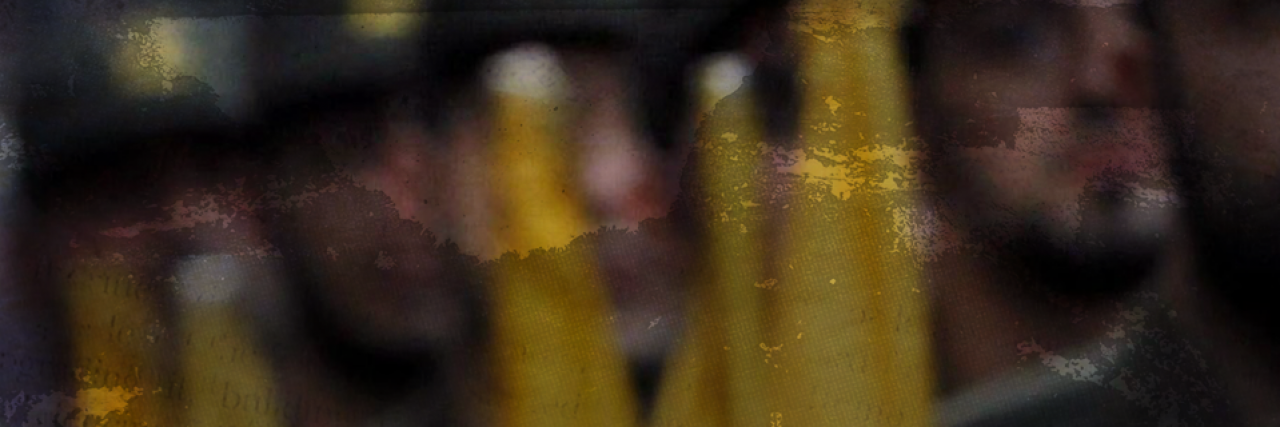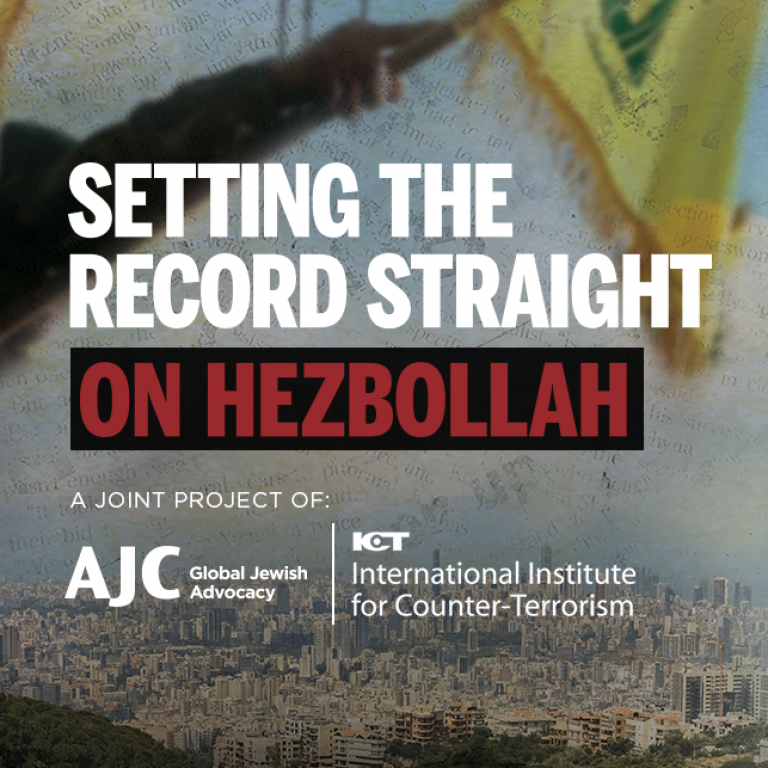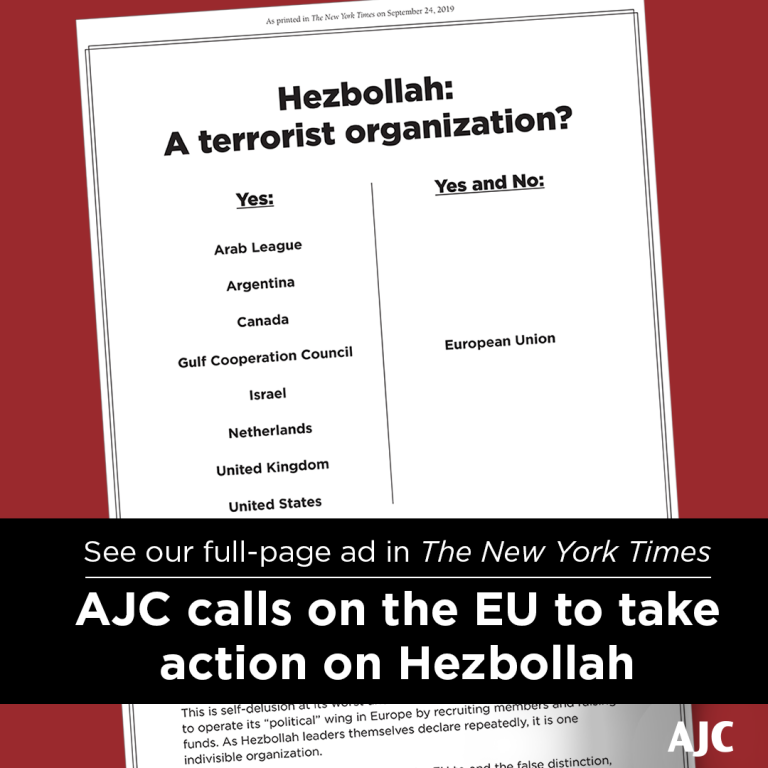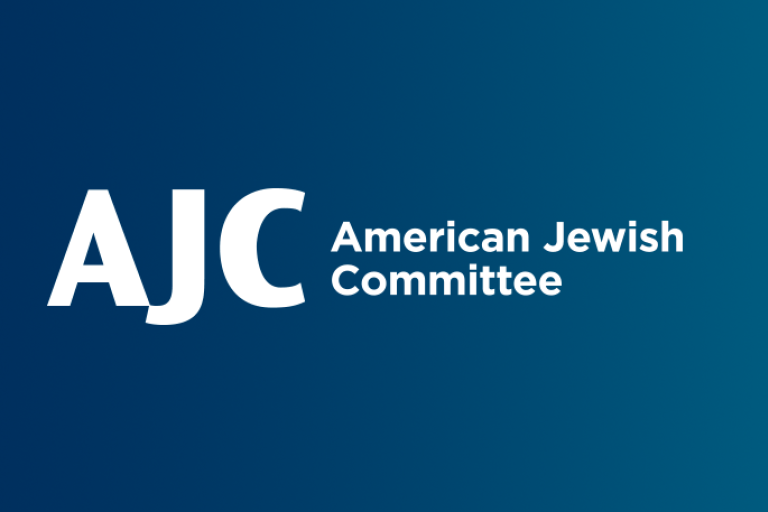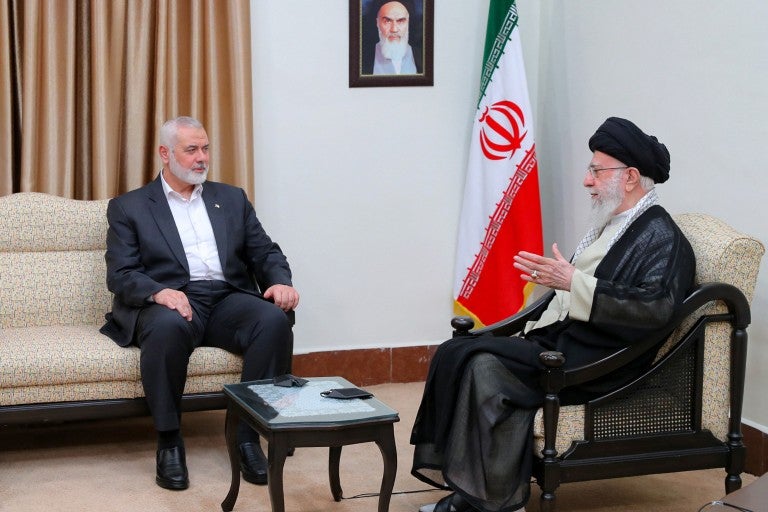“Hezbollah has evolved from its earlier days of transnational terrorist operations to become a political power.”
Short Response: Hezbollah is a hybrid terror organization, much more dangerous than the terrorist revolutionary entity of the 1980s.
The Facts: Hezbollah never abandoned its goals, but altered its timing to accomplish them. The organization acts simultaneously inside and outside the scope of the Lebanese political system and enjoys wide breadth in both. The pragmatic façade of the organization misleads many researchers and international political actors.
Hezbollah’s introduction to Lebanese politics was perceived by many as a first (and important) step away from its extreme ideological path. To promote this alleged shift, Hezbollah has worked hard to obscure its pan-Islamic terrorist image and create a façade of a legitimate Lebanese political movement fighting against an occupying army. In the 1990s, Hezbollah reduced the scope of its terror attacks against Western targets in Lebanon and elsewhere, opting instead to perform “higher quality” terror attacks, and then denying any involvement in them.
Hybrid Terror Organization:
- Hezbollah doesn’t see itself as an organization that has one or more independent wings. Its leaders have made it perfectly clear that it is a hierarchical organization working as one unified organization, under the same leadership, headed by Hassan Nasrallah and the Shura Council (Majlis Al-Shura), whose members come from all the wings of the organization. Hezbollah’s entry into the political arena didn’t tame it, just as it hasn’t tamed any other Islamist organization that has stepped into politics, including the post revolution Iranians.
Hezbollah introduction to the political arena rests on three principles:
- It enables Hezbollah to play by the Lebanese political system rules within the parliament, municipal systems, administration, and public sector, while continuing to “play outside the lines.”
- Hezbollah can advance within the Lebanese political system by creating crises and forming alliances.
- Hezbollah can continue to use violence to advance its agenda, assassinating political opponents such as Rafic Hariri, leveraging its own military force to affect policy changes, and escalating its involvement in the Lebanese civil war and political upheaval of May 2008, during which time the organization used its military capabilities against civilians in response to a Lebanese government decision that it refused to accept. (Hezbollah attacked and seized control of the government's centers of power in Beirut – the Sunni neighborhoods. During the battle, which lasted about three weeks, dozens of civilians were killed and injured. The intervention of the Arab states led to the end of the crisis and the formulation of the “Doha Agreement.”)
- An in-depth look into Hezbollah’s organizational structure and how it presents itself in the local and international arena paint a much different picture from what it tries to portray. The Shura Council oversees Hezbollah’s military, social, and political operations. Occasionally its own leadership exposes the organization’s true colors. In January 2002, Mouhamad Panish, one of Hezbollah’s representatives in the Lebanese parliament, said that “the military wing of Hezbollah is inseparable from its political wing.”
- Since 2005, Hezbollah has caused crises whenever the government decisions or policies were not aligned with its interests. In 2006, Hezbollah ministers resigned and decried the government as illegitimate as part of a political campaign to topple the government. Hezbollah also carried out political assassinations of leaders from the anti-Syrian camp (most of them have never been solved) and, in May 2008, took over western Beirut neighborhoods that resulted in dozens of casualties and many wounded.
- Over the past four decades Hezbollah has built the infrastructure for an international terror network in more than a dozen countries. This infrastructure is closely controlled by the Shura and the Jihad Councils and has carried out terror attacks since the 1990s. It is well-organized to gather intelligence and attack Israeli, Jewish and Western targets around the world. The network also purchases weapons, smuggles guns, and raises money.
- Hezbollah operatives are heavily involved in criminal activity, especially drug trafficking and currency forgery. They also deal in blood diamonds, gold and cigarette trade, car theft, credit card fraud, and more. The annual revenue generated from these criminal enterprises is estimated at up to hundreds of millions of dollars. Hezbollah’s uses the revenues of its international criminal activity for terrorism.
- The threat Hezbollah poses for Europe is also about providing infrastructure for terror attacks. In the past years, safe houses and warehouses were located around Europe where huge quantities of explosives and explosive raw materials were kept. For example, in 2015 a warehouse storing 8.3 tons of ammonium nitrate, the explosive material used in the 2012 Burgas attack, was located in Cyprus. Six months later, four safe houses storing three tons of ammonium nitrate were discovered in residential neighborhoods of London. Important to consider is the additional threat of accidental explosions to neighboring residents.
